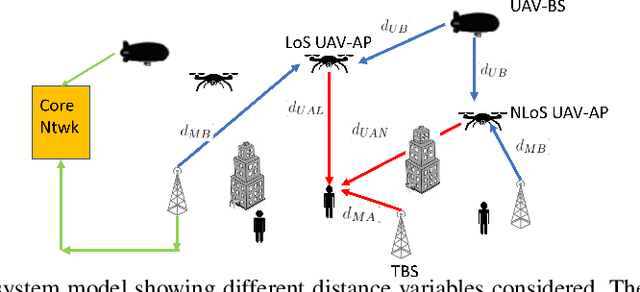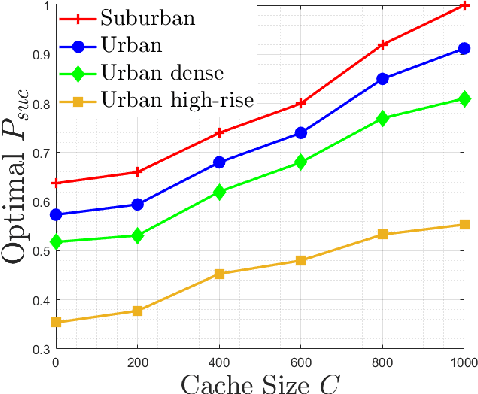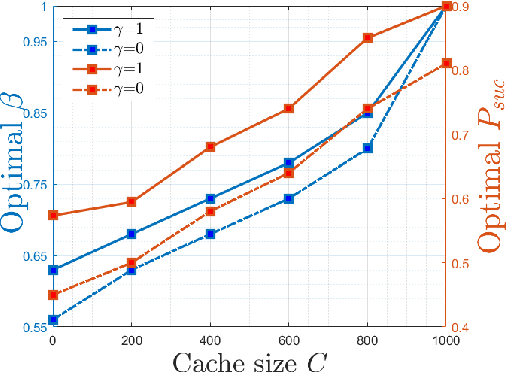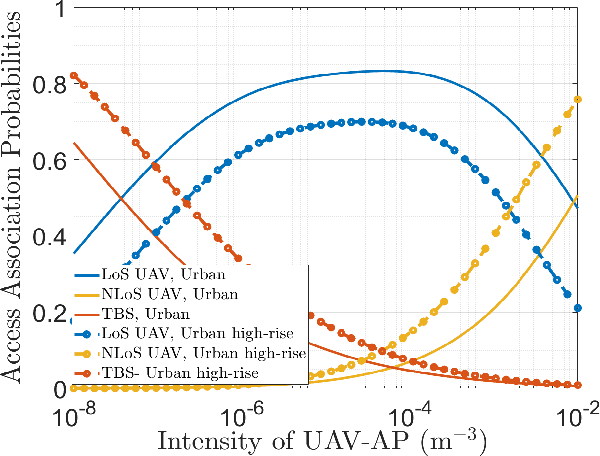Neetu R R
Impact of Device Caching and Handovers on the Performance of 3D UAV Networks with Blockages
Sep 30, 2024



Abstract:We investigate an urban network characterized by blockages, where unmanned aerial vehicles (UAVs) offer ad-hoc coverage to mobile users with distinct service rate requirements. The UAV-BSs are modeled using a two-dimensional (2-D) marked-poisson point process (MPPP), where the marks represent the altitude of each UAV-base station (UAV-BS). Initially, we model the network blockages and analyze the association probabilities of line-of-sight (LoS) and non-line-of-sight (NLoS) UAV-BSs using stochastic geometry. Subsequently, we derive the bth moment of the conditional success probability (CSP) and employ a meta distribution (MD)-based analytical framework of signal-to-interference noise ratio (SINR) taking into account the blockage distribution in the network. Furthermore, we proposea cache-based handover management strategy that dynamically selects the cell search time and delays the received signal strength (RSS)-based base station (BS) associations. This strategy aims to minimize unnecessary handovers (HOs) experienced by users by leveraging caching capabilities at user equipment (UE). We evaluate the HO rate and average throughput experienced by users ensuring their service rate requirements are met. We demonstrate that LoS associations decrease as the network density increases due to the substantial increase of NLoS UAV-BSs in the network. Additionally, we show that the presence of blockages does not necessarily have a negative impact on network reliability
Cache Enabled UAV HetNets Access xHaul Coverage Analysis and Optimal Resource Partitioning
Jul 14, 2022



Abstract:We study an urban wireless network in which cache-enabled UAV-Access points (UAV-APs) and UAV-Base stations (UAV-BSs) are deployed to provide higher throughput and ad-hoc coverage to users on the ground. The cache-enabled UAV-APs route the user data to the core network via either terrestrial base stations (TBSs) or backhaul-enabled UAV-BSs through an xHaul link. First, we derive the association probabilities in the access and xHaul links. Interestingly, we show that to maximize the line-of-sight (LoS) unmanned aerial vehicle (UAV) association, densifying the UAV deployment may not be beneficial after a threshold. Then, we obtain the signal to interference noise ratio (SINR) coverage probability of the typical user in the access link and the tagged UAV-AP in the xHaul link, respectively. The SINR coverage analysis is employed to characterize the successful content delivery probability by jointly considering the probability of successful access and xHaul transmissions and successful cache-hit probability. We numerically optimize the distribution of frequency resources between the access and the xHaul links to maximize the successful content delivery to the users. For a given storage capacity at the UAVs, our study prescribes the network operator optimal bandwidth partitioning factors and dimensioning rules concerning the deployment of the UAV-APs.
 Add to Chrome
Add to Chrome Add to Firefox
Add to Firefox Add to Edge
Add to Edge